Which Shape is Your Spine?
SCIJ isn’t a very memorable acronym, but the shapes of the letters do accurately represent the four most common spinal shapes. In this blog post you will discover which SCIJ category you belong in, what changes you might want to make, and the first baby steps to improve your spinal shape.
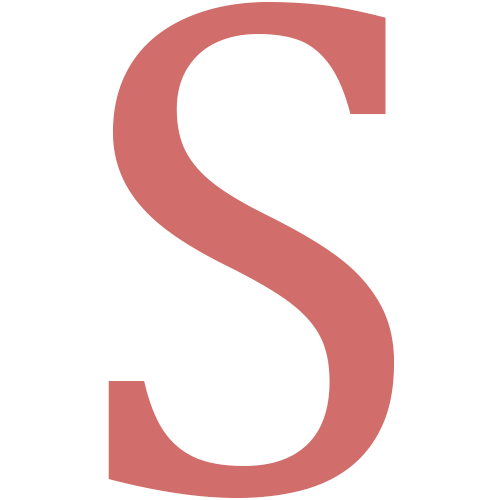
The letter “S” is widely used to describe the conventional paradigm for an ideal shape of the spine. The Gokhale Method perspective is that we need a paradigm shift.
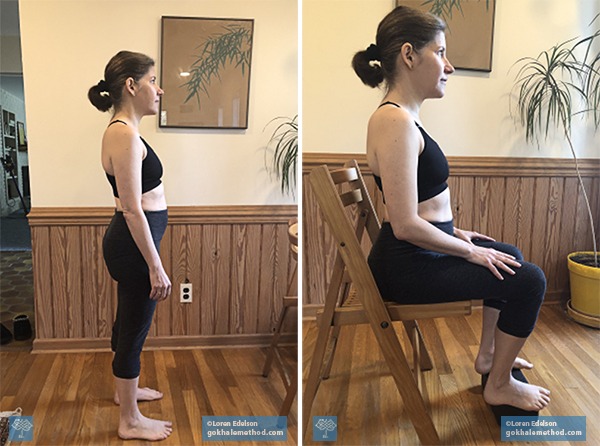
Loren had developed a pronounced S-shaped spine before she took the Gokhale Elements online course. Tightened lower back muscles formed a pronounced lumbar curve, and her upper back had to round over to return her to upright.
S. This is the spinal shape considered to be normal (as well as ideal) in today’s conventional wisdom. You will find the S template for spinal shape in lay circles, alternative health circles, as well as medical circles. Massage therapists, yoga teachers, physical therapists, and medics, are all taught the S-shape paradigm, which may include arguments about the strength of arches and “opposing curves'' and their ability to absorb vertical load like a spring.
The S-spine consists of a significant concave curve in the lower back meeting a significant convex curve in the upper back. From the Gokhale Method perspective, both curves are exaggerated and can lead to pain and dysfunction. This posture loads the spinal joints and takes a lot of muscular tension to maintain. It is the reason, we posit, that maintaining “good posture” has a reputation for being hard work. If this shape fits your spinal contour, it is unlikely to have been called out by either conventional or alternative practitioners. After all, it is the described ideal. If you have faced the frustration of having your back “go out” soon after an intervention, or your symptoms return again and again, a possible reason is that your S-shaped spine has never been recognized as the root of your problem, let alone be treated.
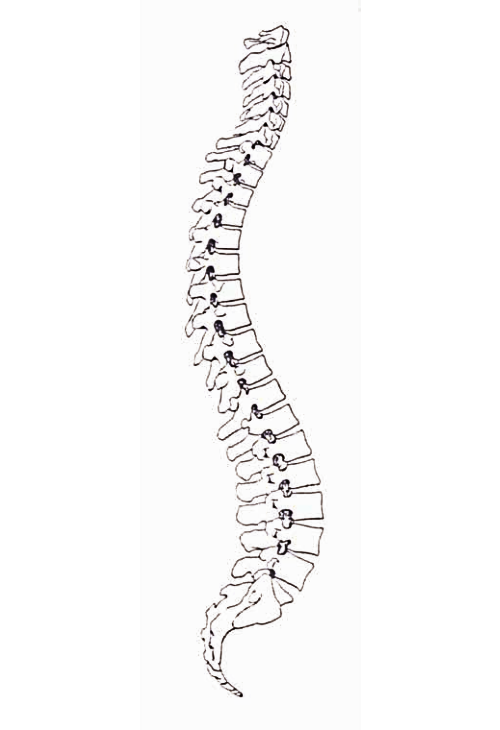
This medical illustration (1990) displays the excessive curvature that can result in pinched nerves and compressed intervertebral discs.
As both the vertebrae and the intervertebral discs have virtually parallel upper and lower surfaces, like a cylinder, the exaggerated curves of the S-spine create pinch points that can impinge on nerves, and cause wear and tear on the discs and degenerative change in the bones. Any of the tissues of the back, shoulder area, and neck might well “complain” about being obliged to maintain these contours.
An ideal first step to improving the shape of your S-spine would be stretchsitting. You can begin to learn stretchsitting here.
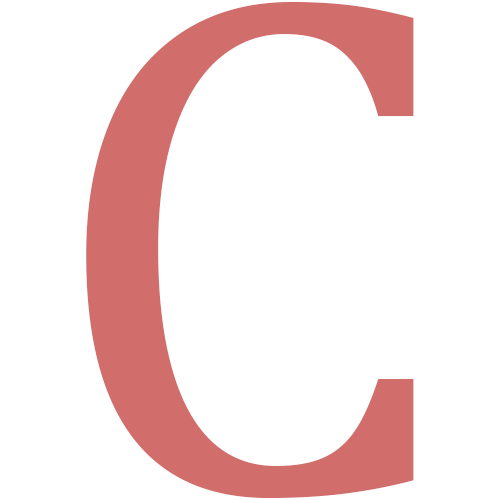
The letter “C” describes the most common modern posture of all—slumped.
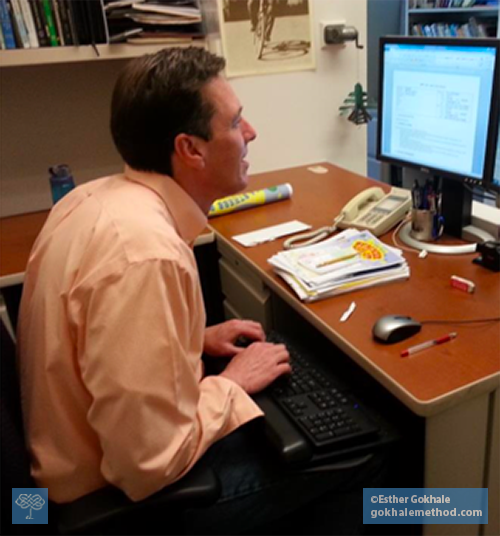
The C-shaped spine will curve more at the top if we hunch more…

or curve more at the bottom if we tuck more…
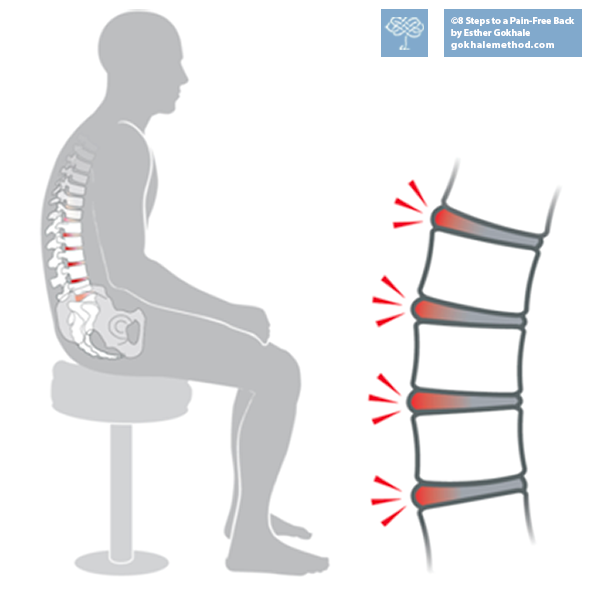
either way, a C-shaped spine is bad news for our discs.
The C-spine is the product of slumped posture, with the tail tucked between the legs, shoulders rounded, and head forward. This compresses the front of the spinal discs, squeezing the interior contents (the nucleus pulposus) backward. This is the most dangerous direction to load the spinal discs since the nerve roots exit the spine right behind the discs. Slumping with a C-spine also overstretches and weakens the ligaments around the spine, undermining their ability to maintain the integrity of our all-important spinal column. Many people alternate between forcing an S-shape in their spine in the name of “good posture” (wrong!) and collapsing into a C-shape when they are fatigued from their efforts. Both these shapes in fact cause damage—in different ways—and need to be replaced with a J-shape (keep reading!).
An ideal first step to improving the shape of your C-spine would be learning to use your inner corset, the deep muscles of the abdomen and back which support and protect the spine. This is explained in detail in my book, 8 Steps to a Pain-Free Back.
Free Chapter of 8 Steps to a Pain-Free Back
As a special gift to newsletter subscribers who have confirmed their subscription, we would like to send you the Inner Corset chapter from Esther's book, 8 Steps to a Pain-Free Back.
Please enter your email address in the field below and you will be sent an email with your Inner Corset chapter. You may receive a confirmation email to sign up to the Positive Stance newsletter first.
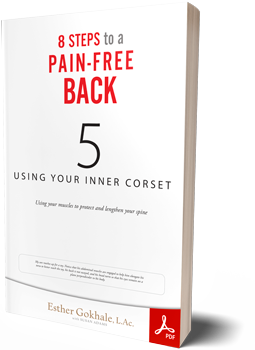

The I-spine shape results from a “sinking into oneself” without a significant increase in spinal curvature. 
Older people may develop an I-spine as they lose height due to spinal degeneration. Unsplash
The I-spine is common in older folk living in modern industrialized societies. There are no particularly pronounced contours in the spine, but rather a general “melting into itself” with the disappearance of 1 or more inches in height accompanying the aging process. The shrinkage is often the result of degeneration in the discs or mini-fractures in the vertebrae. Some diagnoses that might accompany this spinal shape include osteoporosis and stenosis. The pelvis is tucked, there is no angle between the buttocks and the back, and the buttocks are underdeveloped. Though the I-shape is most common in older people, it can begin at a young age with tucking the pelvis.

This photo of Taylor Swift shows how a tucked pelvis flattens the lumbosacral angle, and disadvantages the gluteal muscles, combining to produce a flat “behind."
An ideal first step to improving your I-spine would be to learn stretchlying on your back.

The letter J represents the healthiest spinal shape.
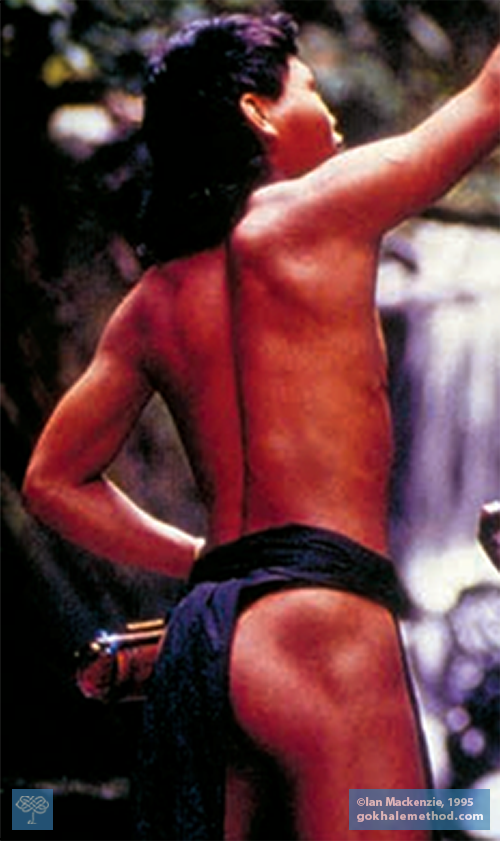
The shape of this Ubong tribesman’s back is best described as a J-spine.
Though rarely preserved in adults in modern industrialized societies, the J-spine is the shape we all enjoyed as toddlers and is still prevalent in many nonindustrialized areas of the world. This “J” is a modern, stylized “J,” reflecting the relatively straight alignment of the vertebral column and the pronounced angle at the lumbosacral junction. There is no exaggerated lumbar sway or thoracic curvature. You can see this shape embodied in the Ubong hunter’s torso.
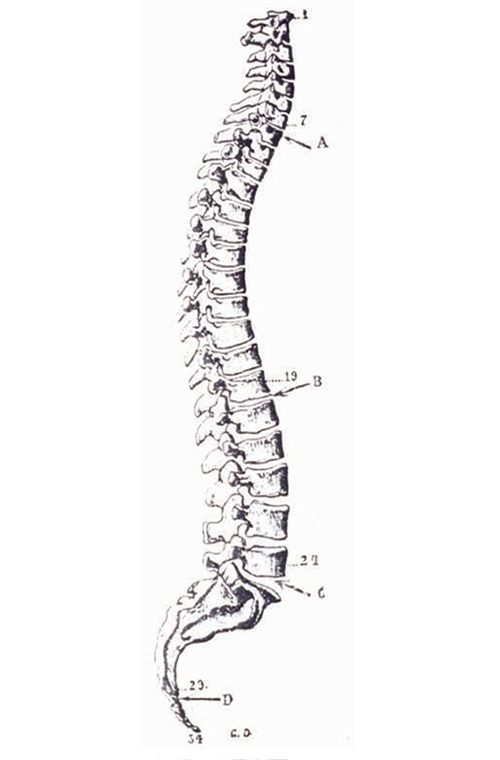
This medical illustration from 1911 more closely depicts the J-shape spine rather than the S-shape of modern conventional wisdom. The only pronounced curve is at the L5/S1 junction at the base of the spinal column.
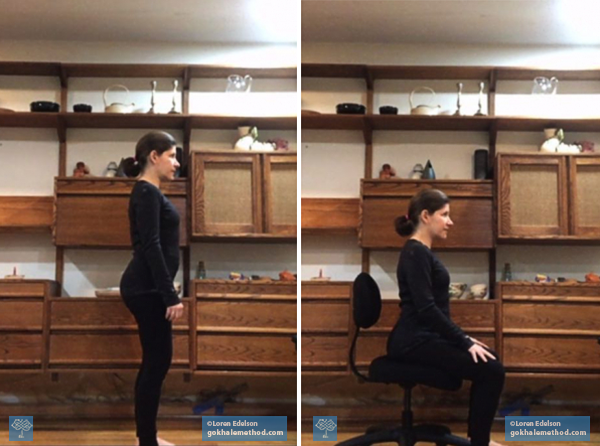
Since taking the Gokhale Elements online course, Loren has made good progress in losing unwanted curvature in her back. Her upper lumbar spine has straightened out considerably. Over time, given her dedication, we expect to see her most pronounced curve move lower as she continues to cultivate her J-spine.
If you are interested in restoring your J-spine, we recommend taking our Elements course (one-on-one coaching online), or our Foundations Course (one-on-one or small groups in-person) or Pop-up Course (not available during COVID). These courses teach you to systematically lengthen, strengthen, and remodel your spine to a healthier J-shape in a safe and effective way.
To gradually and safely improve their spinal shape students learn well-honed techniques using their fingertips to monitor their spinal groove, kinesthetic and visual cues, customized exercises, and visualizations. Because it is still challenging to rely heavily on your proprioceptive sense, we have also developed the PostureTracker™, a tool that tells students exactly where they are positioned using Bluetooth sensor technology. PostureTracker tracks the shape of your spine in real time—it gives immediate and intuitive feedback, is easy to use, and reveals information about your spine that a plain mirror cannot show you. Though PostureTracker is not yet available for sale, it is available as a loner (while supplies last) to students who sign up for the online one-on-one Gokhale Elements course.
![]()
If you sway in your lumbar area, PostureTracker will show what is going on with your spine.
To get an idea of the current shape of your spine, view yourself side-on. You can use a mirror, but it is best to photograph or video yourself, or use several mirrors, so that you can observe your shape without turning your head. Take a while to study yourself both sitting and standing. Notice that your spine changes if you alternate between swaying and slumping. You may discover that your habitual posture combines elements from two or more of the categories we have described—for example, you may most closely resemble the I-spine, except that your head and neck jut forward.
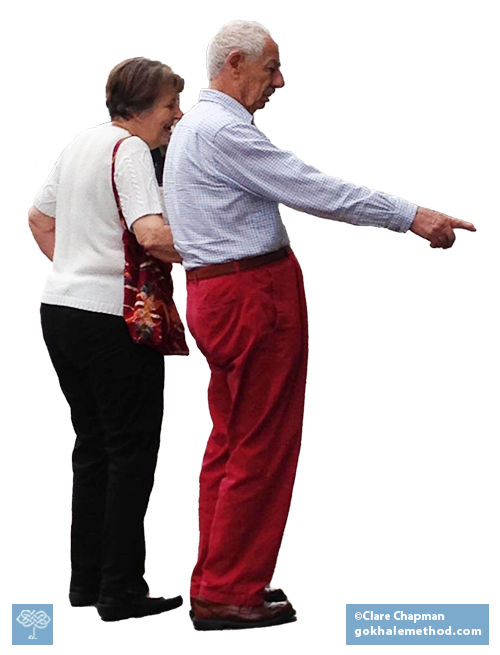
The curves in our spines precisely reflect our everyday posture habits.
If you would like a trained eye to help you understand your spinal shape and how to improve it we recommend an online Initial Consultation with a Gokhale Method teacher. In-person Initial Consultations may also be available depending on the COVID status of your area.

Comments
Great photos - so instructive
Great photos - so instructive at a glance. Thank you for your teaching, Esther. So grateful for you! xo
Add New Comment
Login to add commment
Login